|
The
CORTESE BROTHERS
...and
the Music they brought to Memphis
|
|
|
|
|
There
aren't many around who might know about the Cortese
brothers other than recognizing their name on an old Memphis
theatre program. But they were great musicians as
well as prominent Memphis instrumental music teachers. And they were responsible for
bringing the greatest artists from the world of Classical Music to Memphis,
along with major actors, dancers, and Broadway productions.
This is their story... |
|
|
|
|
|
|
|
|
|
|
Click on small
photos to see an enlargement |
|
|
|
|
|
|
The story begins in Marsicovetere, Italy with their father,
Antonio Cortese. Marsicovetere is a town in the province
of Potenza, in the Southern Italian region of Basilicata. The
town center is historically important, although most of today's
population of 5,253 resides in the new part of town. Antonio Cortese was born here and had studied music in Paris, where he
became a gifted violinist, although not a prosperous one. With the help of friends he immigrated to Canada
around 1886 along with his wife, Maria Francesca
and their first child, 6 month old Angelo. |
 |
| |
Marsicovetere, Italy |
|
|
|
|
|
|
|
 |
The Cortese family relocated to London, Ontario, Canada. which was
first settled by Europeans in 1826 and was incorporated as a
city in 1855. It grew into the largest Southwestern
Ontario municipality and when the Cortese's arrived it was
a thriving community, where Antonio was able to establish
his own successful orchestra "the London Italian Harpers."
Soon the oldest son Angelo was joined by the births of brothers John
(Jack) and Joseph, sisters Nettie and Jessie. The three
brothers were musical and began studying at an early age.
Angelo studied the Harp, Jack, the Flute, and Joseph, the Violin.
All three were gifted. |
| London,
Ontario 1890 |
|
|
|
|
|
|
|
| |
| |
 |
Angelo first studied music with his father's cousin, Frank
Cortese, harpist with the Philadelphia Philharmonic, and
then with Enrico Tramonti, harpist with the Chicago
Symphony, eventually, with the great Alphonse Hasselmans at the famous Paris Conservatory of Music.
Joseph studied violin with Ludwig Becker, concert master of
the Thomas Orchestra of Chicago, and then with Ovide Musin, famous
Belgian violinist. Jack studied with Quinzel, first flutist
with the Thomas Orchestra of Chicago, and then with M. Hennaibains
of the Paris Conservatory. All brothers became members of Concert
Orchestras as well as prominent soloists in Canada and the
United States. |
|
Angelo
1896 |
|
|
| |
 |
 |
 |
 |
 |
 |
|
Angelo |
Joseph |
Jack |
A. Hasselmans |
Hasselmans |
Angelo with Hasselmans 1911 |
|
|
|
 |
 |
 |
 |
 |
 |
| Paris
Conservatory |
Frank
Cortese |
Frank's
Orchestra |
Ovide Musin |
Cortese Men |
Angelo's
Debut |
|
|
|
|
"Old Ma
(Maria Francesca Cortese, she was always referred to as one of these
two names, never just Maria) would say "You've got to play those
instruments, or you'll never be nothing in life." (A.
James Cortese, Angelo's son) |
|
|
|
|
|
|
|
|
|
|
|
|
|
|
|
The MEMPHIS Years ...
Angelo
was invited to Memphis in 1911 by Mrs. Houstis Sims, arts
patroness and wife of brain surgeon Houstis Sims, to play with the new Memphis Symphony
Orchestra ... and from that introduction, Memphis became his
home. Memphis, at this time was beginning to burst with a
growing population, and the city was starved for good music.
Angelo knew he could help satisfy this demand.
|
 |
| |
Memphis 1910 |
|
|
|
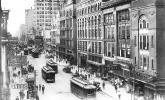 |
 |
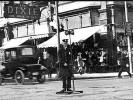 |
 |
| Memphis 1912 |
Memphis 1912 |
Memphis 1920 |
Music News
1917 |
|
|
|
|
|
|
|
|
|
|
|
|
Joseph
came to Memphis in 1913. Besides being a violin
virtuoso, he was a great choir master and became president of the
Choir Masters Guild of Memphis. It helped that he could play
any instrument. Although Jack had visited Memphis and been
with his brothers in numerous local concerts, he didn't make the final
move to the city until 1926, because he served a stint in the Royal
Canadian Mounties. While his Memphis brothers had
begun to manage concert tours in the South, Jack was doing the same
thing in Canada. |
 |
|
Cortese Trio 1925 |
|
|
|
|
|
|
|
|
|
|
|
In 1918, the faculty of St. Agnes College established the
Memphis Conservatory of Music
where students could acquire a B.A. degree in music. It became
the formal music education center of Memphis for beginning,
advanced and professional students. Angelo and Joseph
taught here. After the Conservatory was incorporated
in 1923 it eventually formed the Department of Music at
St. Agnes College. |
 |
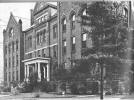 |
| |
Mphs Conservatory |
St. Agnes
College |
|
|
|
|
|
|
|
|
|
|
For
many years
East
End Park
was a favorite destination for Memphians. The dance pavilion
at the park was called the Chrysanthemum Ballroom. Prominent
charitable organizations sponsored dances here and one could see
the same crowd as at the Country Club or the Hunt and Polo Club,
mingling with "ordinary" citizens. Big name bands were a major
attraction and the pavilion vied with the Chisca Hotel ballroom
as a tango palace. The Cortese Brothers booked the leading
bands, like Jan Garber and Blue Steele's into The Chrysanthemum
Ballroom |
 |
| |
East End
Ballroom |
|
|
|
|
|
|
|
|
|
|
|
 |
From the time of their first arrival in Memphis, the Corteses
played constantly, as a trio or individually. They also
toured the small towns and cities of the south for many
years. In 1923, the brothers performed a program of
chamber music to open
WMC,
Memphis' first radio station. For several
years afterwards, they regrouped to celebrate the station's
anniversary. They also performed on the opening broadcast
of
WREC.
Their Downtown office was at 103 S. Main - a still existing
building. |
|
WMC Stamp |
|
|
|
|
|
|
|
|
 |
 |
 |
 |
 |
|
Angelo |
Angelo 1924 |
Angelo |
1920
Promotional |
1920
...Continued |
|
|
|
 |
 |
 |
 |
 |
 |
| 1920s-30s
Promotional |
1920s-30s
Continued |
"2014" |
1911
|
1925 Ad |
Cortese Trio |
|
|
|
|
"The
three brothers would practice at Angelo's home. The reason was
that it took too much work to move and haul that 'huge ukulele
(harp) around all the time." (A. James Cortese,
Angelo's son) |
|
|
|
|
|
|
|
|
|
 |
From
May to November, the Concert Business tended to be slow
and the Corteses needed more to occupy their time. In 1927
Jack and Joe invested in the dry cleaning business and they were
successful at this totally unrelated business. Their
Krosstown Kleaners
building at 1400 Madison still stands today. Jack remained
active at the cleaning shop up until 1972. In addition to
this business, the three Corteses were ardent fishermen, and they
fished two or three times a week. Joe was also a big
Bridge player. |
|
1400 Madison |
|
|
|
|
|
|
|
|
|
The three
brothers really liked each other and throughout their
lives remained very close.
Not
only were they almost always together, their families were also
almost always together. They lived near each other and
took vacations together, and their individual families grew up
together. Their lives seemed to revolve totally around
each other. If they weren't working together, they were
fishing or playing together. Angelo's wife was Lorienne,
and they had 2 sons and 3 daughters. Joe's wife was Dorothy,
and they had 5 sons. Jack's wife was Emily and they had
no children. |
 |
| |
Lake Huron, Ontario, Canada ... |
|
|
|
|
|
|
|
|
For years, the Cortese Brothers played the music for the midnight
Christmas Mass at Immaculate Conception Catholic Church.
"The brothers amongst themselves felt that even though they were all
really outstand musicians, that Joe was the best of three."
(A.
James Cortese, Angelo's son) |
|
|
|
|
|
|
|
|
 |
Angelo had
come to Memphis to play harp with the first Memphis Symphony
Orchestra, and he continued with them as long as the orchestra
functioned. He and his harp were continuously in demand for
concerts, weddings ... and funerals. "Angelo got tired of
doing so many weddings; so he raised his price from $250 to $500.
He still had just as many weddings." (A. James
Cortese, Angelo's
son). In the 1940s, a muscle
ailment in his right arm ended Angelo's concert career. |
|
Angelo- 1960s |
|
| |
Ironically, in a city noted for demolishing its past, the
long-time homes of the Cortese brothers still exist - 1870 Union
Av, 1287 Harbert Av. and 1280 Worthington Pl. |
|
|
|
|
|
|
|
|
Angelo
died in 1966. Joe died in 1969. Jack died in 1977.
After Angelo's death, Jack sold his instruments, and the remaining two
brothers never played again. |
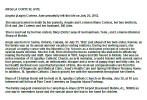 |
 |
| |
Angela's
Obit |
Mary's Obit |
|
| |
|
|
| |
| |
|
|
|
|
|
|
|
|
|
|
|
|
|
|
|
|
When the
Cortese Brothers arrived in Memphis in 1911 and 1913, there was a
shortage of good music as well as theaters appropriate for major concert artists.
The Greenlaw Opera House had burned in 1880. The Old
Memphis Theatre had burned in 1891. And the
Auditorium-Bijou burned in 1911. The Odd Fellows Hall (1000 seats) was only
occasionally available for touring companies. The
Goodwin Institute (900 seats) was better suited for lectures. The Lyceum (2010 seats)
and Orpheum (2000 seats were now showing films with Vaudeville
and not available. The 19th
Century Club was suitable for small concerts only. The
desperately needed Ellis Auditorium was not built until 1924.
That left the Lyric Theatre with 1500 seats. |
 |
| |
Lyric Theatre |
|
|
|
|
|
|
|
|
|
|
|
|
|
|
|
And finally, in 1924 Memphis got
its Auditorium ... with 12,000 seats |
|
|
|
It
didn't happen overnight. There were endless discussions,
numerous changes, additions, and cost over-rides, etc. The
Auditorium-Market Place was finally dedicated in 1924 with a
concert featuring John Phillip Sousa's Band. Memphis
finally had a proper auditorium for fine music. 11,000
attended the afternoon concert and 14,000 the evening concert.
Negotiations for Sousa's contract were handled by the Corteses
and the contract was turned over to the city because the
concerts were Free. For the next 75 years, every major
touring company and international celebrity in the world was
proudly presented at Ellis Auditorium. |
 |
| |
Ellis
Auditorium 1926 |
|
|
|
|
|
|
|
And then The
Shell ...
|
 |
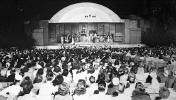 |
 |
| |
Overton Park
Shell |
Vintage MOAT
Performance |
Billboard
1943 |
|
|
|
|
St.
Louis had an open air theatre, so why shouldn't Memphis?
In 1936 the Overton Park Shell opened and the first concert
featured a solo by violinist Joseph Cortese. The Shell
became the Memphis Open Air Theatre (MOAT) and Memphians loved their
light operas under the stars all summer long. From 1939
to 1951 Jack Cortese was the flutist in the orchestra and Joe
Cortese was the concert master and first violinist. In 1940,
Joe became the general manager for the next 11 years.
Perhaps the most famous event in the history of the Shell occurred
when it became the location for Elvis Presley's first PAID
performance. Thus, it is on the "Elvis Tour". The
Shell still exists and is now known as the Leavitt Shell.
Live performances are still held there - with picnics on the
grass. |
|
|
|
|
|
|
|
|
|
|
|
Some of the artists the Cortese
Brothers brought to Memphis and the reviews and ads... |
|
|
|
The Cortese's initial venture in 1914 was to bring the famous
Nellie
Melba
and
Kubelik,
the violinist, to Memphis. There was no theatre available
so they leased a skating rink which served as a combination
theatre-rink. 3,000 tickets were sold and still others
were turned away. The concert was a huge success but the
old skating rink was a huge failure. However, it started the campaign
for a new downtown auditorium. |
 |
 |
| |
Melba |
Kubelik |
|
|
|
|
In
1919 the Cortese Brothers introduced an "All Star Concert
Series". Their outstanding soloist this season was
the beautiful
Mary
Garden
the
star of the Chicago Lyric Opera Company.
|
 |
 |
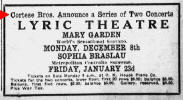 |
| |
Mary Garden |
1919 Review |
1920 Ad |
|
|
|
|
The
1919 "All Star Concert Series" also included
Madame
Schumann-Heink,
the world famous contralto. The Cortese Brothers
arranged her tour from Mississippi to Missouri. One
of these bookings was unsuccessful and lost money. The
gracious Schumann-Heink reimbursed the Cortese's for their loses
- a rare deed for any artist. |
 |
 |
 |
| |
Madame Schumann-Heink |
|
|
|
|
|
|
|
|
|
|
|
|
|
|
Also in the 1920-21 season was soprano
Luisa
Tetrazzini
an
coloratura soprano of great international fame. Her voice
was considered remarkable for its flexibility and thrilling
tone. She was in ill health during her final years in
the 1920s and this caused a lot of cancellations. |
 |
 |
 |
 |
| |
Tetrazzini |
1920 |
1920 |
1920 |
|
|
|
|
Creatore Grand Opera Company
. San Carlo Grand Opera Company
The
Cortese Brothers had such faith in Memphis that they booked the
Creatore Grand Opera Co and the San Carlo Opera Co for several days at a time - a bold
move. There were grand productions of Aida, Barber of
Seville, Carmen, and Otello. |
 |
 |
| |
1919 Ad |
1920 Ad |
|
|
|
|
|
|
|
|
Paul
Whiteman |
|
Tito
Schipa |
|
Paul
Althouse |
|
|
Will
Rogers |
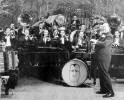 |
 |
|
 |

|
|
 |
|
|

|
 |
|
Paul Whiteman Orchestra |
|
Tito Schipa |
|
Althouse 1921 |
|
|
Rogers 1925-28 |
|
|
|
|
In
1922, the Cortese Brothers brought great dance companies to
Memphis for the first time ...
Isadora Duncan, Ruth St. Denis, Ted Shawn,
and
Martha
Graham
- all
pioneers in their field. |
 |
 |
 |
| |
Isador Duncan |
St. Denis - Shawn |
Martha Graham |
|
|
|
|
The
Cortese also began booking legitimate theatre and musical
comedy. To give the Memphis Censors something to think
about, the
George
White Scandals, Ziegfield Follies,
and
Earl
Carroll Vanities
were booked ... with an extra scarf or two added here and there.
|
 |
 |
 |
|
The
audience loved the shows and they were complete sell-outs. |
George White Scandals |
Ziegfield Follies |
Earl Carroll Vanities |
|
|
|
|
... and |
|
|
|
|
 |
 |
 |
 |

|
| Efrem
Zimbalist |
Mabel
Garrison |
John
McCormack |
Sophie
Breslau |
New York
Philharmonic |
|
|
|
|
|
|
|
|
|
From 1923-1933, the Corteses also managed major attractions all over
the south. Because of their knowledge of the business and
their many contacts, they were able to attract the finest musicians
and talent in all fields of entertainment. Angelo had seen the
potential in Memphis, and with Joseph and Jack, they made it
happen. |
 |
| |
Angelo 1957 |
|
|
|
|
|
|
|
|
|
|
|
Credits |
|
|
|
The
Historic-Memphis website does not intentionally post copyrighted
photos and material without permission or credit.
On
occasion a "non-credited" photo might possibly be posted because we
were unable to find a name to give credit. Because of the nature of
our non-commercial, non-profit, educational website, we strongly
believe that these photos would be considered "Fair Use. We have
certainly made no monetary gain, although those using this website
for historic or Genealogy research have certainly profited. If by
chance,
we have posted your copyrighted photo, please contact us, and we'll
remove it immediately, or we'll add your credit if that's your
choice. In the past, we have found that many photographers
volunteer to have their works included on these pages and we'll
also do that if you contact us with a photo that fits a particular
page. |
|
|
|
The "Historic-Memphis" website would like to acknowledge and thank the
following for their contributions which helped make this website
possible:
Memphis
Public Library, Memphis University Library, Memphis Law Library,
Memphis Commercial Appeal, Memphis Press Scimitar, Shelby County
Register of Deeds, Memphis City Schools, Memphis Business Men's
Club, Memphis Chamber of Commerce, Memphis City Park Commission,
Memphis Film Commision, Carnival Memphis, Memphis Historical
Railroad Page, Memphis Heritage Inc, Beale Street Historic District,
Cobblestone Historic District, Memphis Historic Districts, Vance
Lauderdale Family Archives, Tennessee State Archives, Library of
Congress, Kemmons Wilson Family, Richard S. Brashier, Lee Askew,
George Whitworth, Woody Savage and many individuals whose assistance is
acknowledged on the pages of their contributions. Special
thanks to Memphis Realtor, Joe Spake, for giving us carte blanche
access to his outstanding collection of contemporary Memphis photos.
We do not have high definition copies of the photos on these
pages. If anyone wishes to secure high definition photos,
you'll have to contact the photographer or the collector.
(To avoid any possibility of contributing to SPAM, we do not
maintain a file of email addresses for anyone who contacts us). |
|
|
|
|
|
|
|
|
|
|
|
|
|
|
|
|
|
|
|
|
|
|
|
|
|
| |
|
|